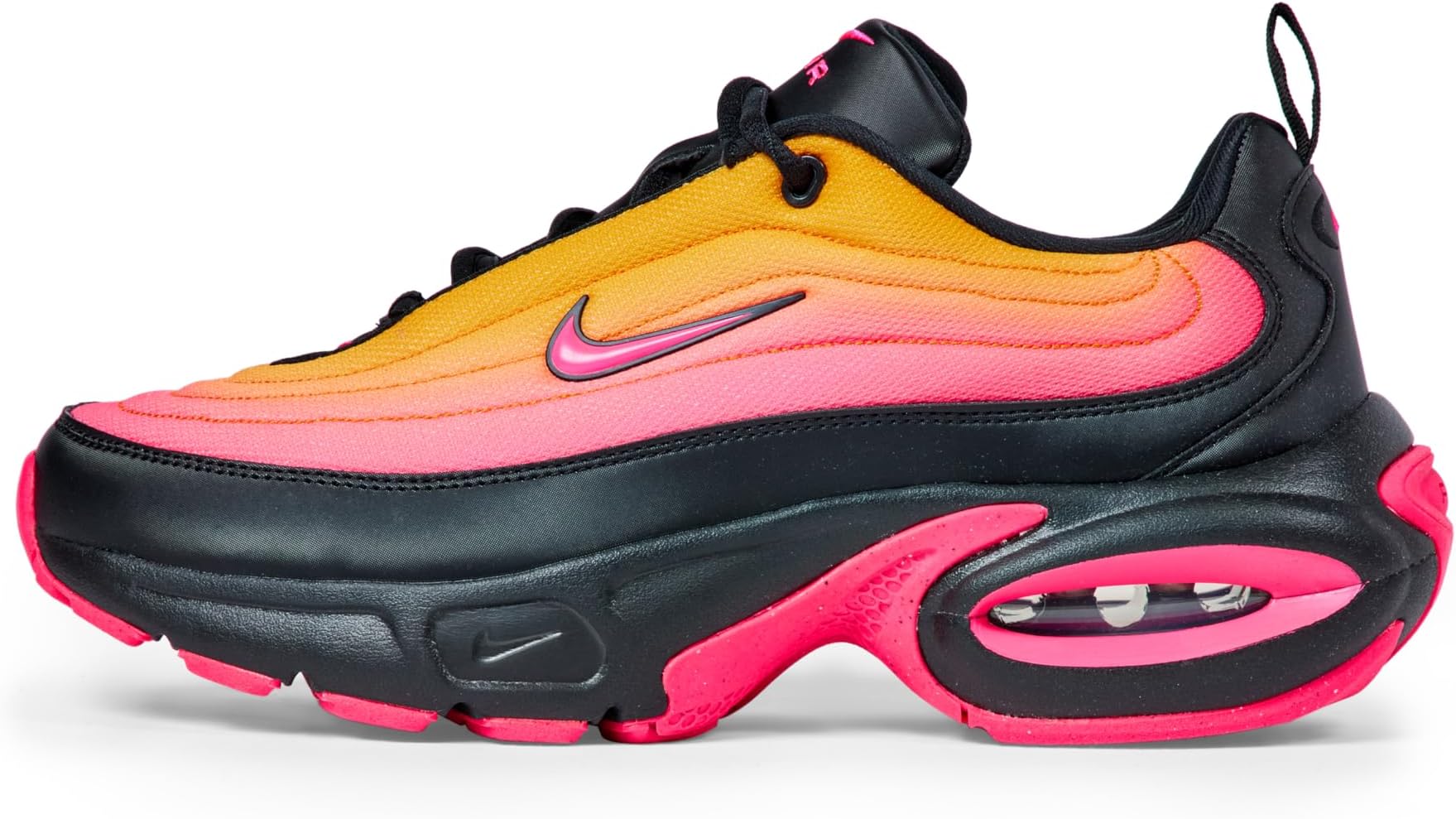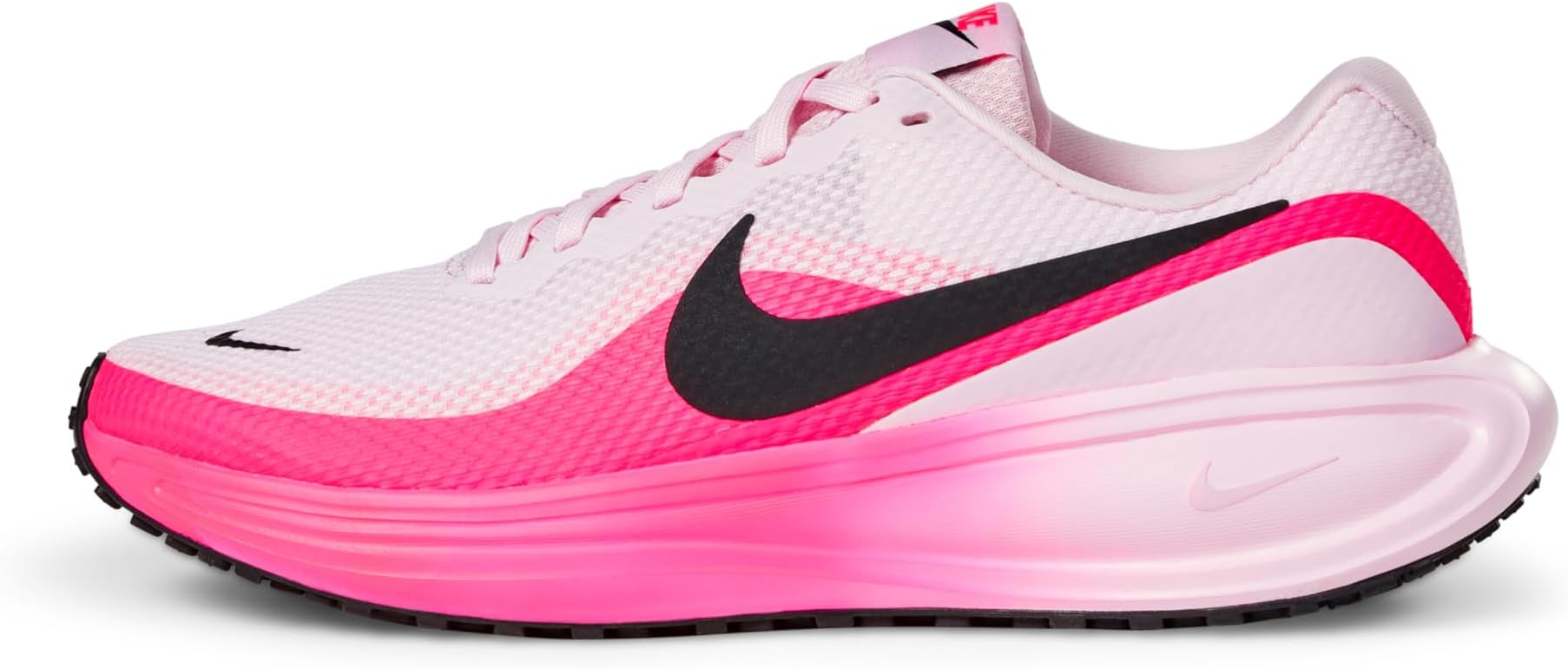 Major Rave ⋮
Major Rave ⋮ The unexpectedness of this design is its deliberate vulnerability; the structural integrity relies entirely on the pressurized air and the robust rubber tread surrounding it, leaving no backup ... — Image of Nike Women's Air Max Portal Shoes — [Take a look]
Find out more.
The clear thermoplastic urethane (TPU) container, visible through the midsole window, is often misinterpreted as merely a soft pillow. In reality, it functions as a highly engineered vessel, calculated specifically to resist acute compression, distributing the force of impact laterally rather than allowing it to dissipate harmlessly. A traditional EVA foam midsole accepts the foot’s downward force and collapses slightly; the Air unit is designed to sharply reject that force, mimicking a controlled rebound.
This constant tension between visible aesthetic and internal biomechanical engineering drives some of the most unusual experiments in footwear architecture. The foot rests upon a pocket of gas engineered to maintain 25 PSI, sometimes more. This necessitates an incredibly strong welding process around the perimeter of the bubble, ensuring the pressurized nitrogen compound remains contained. The shoe is thus less about cushioning and more about a precise, contained pneumatic system—a controlled deception designed to trick the foot into feeling perpetually light.
The Eradication of Foam
One of the most architecturally bizarre developments was the 2017 introduction of the Vapormax platform. The design team, seeking to isolate the feeling of air entirely, made the radical decision to eliminate the foam midsole layer. This structural decision meant the foot rested directly on segmented Air units.
These Vapormax pods are not interconnected like earlier Air Max designs. They function as individual, independent lugs, strategically placed under high-pressure zones of the foot. The unexpectedness of this design is its deliberate vulnerability; the structural integrity relies entirely on the pressurized air and the robust rubber tread surrounding it, leaving no backup cushioning material. When a person steps, the load is distributed across these separated pneumatic chambers, each deflecting impact autonomously. This required developing new, specific algorithms for pressure mapping to ensure the placement of each lug corresponds exactly to where the foot's kinetic energy peaks during stride.
Hidden Stabilizers and Hemispheres
A less visible but equally unique innovation appeared with the introduction of Tuned Air, specifically in the late 1990s. While most Air units present a uniform pressure profile, the Tuned Air system incorporated small, brightly colored, semi-rigid polymer inserts placed *inside* the visible Air unit. These were the "hemispheres."
These hemispheres are the shoe’s internal choreography. Their function is purely architectural: they stabilize the nitrogen gas pocket, preventing the lateral ‘sloshing’ or structural collapse that can occur with high-volume Air units. By compartmentalizing the pressure within the clear vessel, they allow for distinct zones of firmness across the heel and forefoot, often creating a noticeably firmer sensation on the medial (inner) side for stability and a softer impact zone on the lateral side.
The development of the Vapormax system was led by designers including Andreas Harlow and Tom Minami working within the Nike Advanced Innovation Team. Their challenge was ensuring that the direct connection of the air pod to the foot did not create uncomfortable pressure points—a meticulous engineering challenge requiring thermal molding techniques that defy standard shoe construction practices. They essentially created a self-supporting skeletal structure, allowing the air itself to become the sole.
Get It On Amazon ::: (brought to you by Kiitn)
▷ Find out more.
Quick look Nike Women's Air Max Portal Shoes 4.6 4.6 out of 5 stars 11 4.6 out of 5 stars. 11 customer reviews $ 115 . 00 Add to Cart
#Ad Our articles include affiliate links: If you buy something through a link, we may earn a commission 💕
[ Add To Cart ]

No comments:
Post a Comment